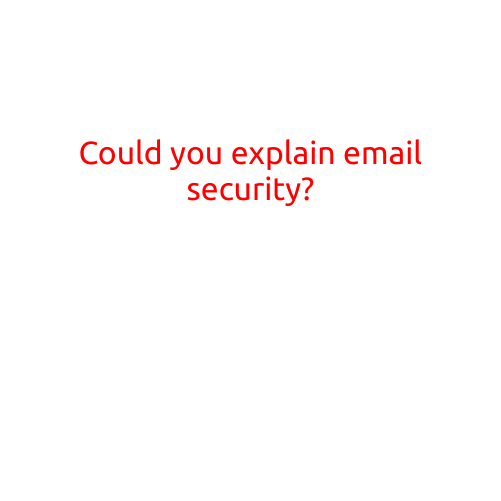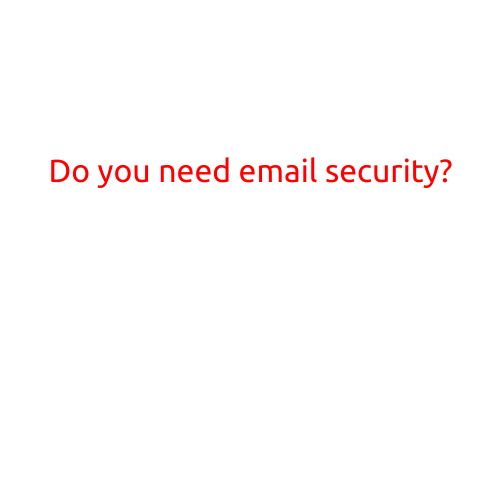
Could You Explain Email Security?
Email security is a crucial aspect of modern digital communication. With millions of emails sent and received every day, it’s essential to understand the ways in which emails can be compromised and the measures taken to protect them. In this article, we’ll delve into the world of email security, exploring the threats, vulnerabilities, and best practices to keep your email accounts safe and secure.
Email Security Threats
Email security threats can be broadly categorized into two types: external and internal.
External Threats:
- Phishing: Phishing attacks involve scammers sending fake emails that appear to be from a legitimate source, tricking victims into revealing sensitive information such as passwords or credit card details.
- Spoofing: Spoofing attacks allow attackers to manipulate email headers to disguise the sender’s identity, making it difficult to identify the true sender.
- Virus and Malware: Viruses and malware can be transmitted via email attachments or links, compromising the security of your device and exposing your personal data.
- Spam: Spam emails can clog your inbox, wasting your time and potentially spreading malware.
Internal Threats:
- Insider Threats: Employee mistakes, negligence, or malicious intent can lead to data breaches and email security issues.
- Policy violations: Unsecured email accounts or shared passwords can leave your organization vulnerable to attacks.
Email Security Vulnerabilities
Email security is fragile because:
- Authentication: Email authentication is tricky, as attackers can use techniques like DNS spoofing to manipulate domains.
- Encryption: Email encryption is not always enabled, leaving sensitive information vulnerable to interception.
- Password Protection: Weak passwords and password re-use can give attackers easy access to your email account.
- Inadequate Firewalls: Without robust email firewalls, you’re exposed to potential threats.
Best Practices for Email Security
To protect your email accounts and stay safe in the digital world, follow these best practices:
- Use strong, unique passwords: Ensure your passwords are complex, lengthy, and changed frequently.
- Enable two-factor authentication: Add an extra layer of security with two-factor authentication, which requires a second form of verification (e.g., code sent via SMS).
- Keep software and firmware up-to-date: Regularly update your email client, operating system, and antivirus software to patch security vulnerabilities.
- Be cautious with attachments and links: Avoid opening attachments or clicking links from unfamiliar senders or unverified sources.
- Use email encryption: Consider using end-to-end encryption to secure your emails and protect sensitive information.
- Monitor your accounts: Regularly check your email account activity and report any suspicious behavior to your email provider.
- Use a reputable email client: Ensure your email client is reputable and regularly updated to prevent malware infections.
Conclusion
Email security is a critical aspect of modern communication, and understanding the threats, vulnerabilities, and best practices is essential to keep your email accounts safe and secure. By following the guidelines outlined in this article, you’ll be better equipped to protect your email accounts and prevent potential security breaches. Remember, email security is an ongoing effort that requires constant vigilance and attention. Stay informed, stay safe, and keep your emails secure!





